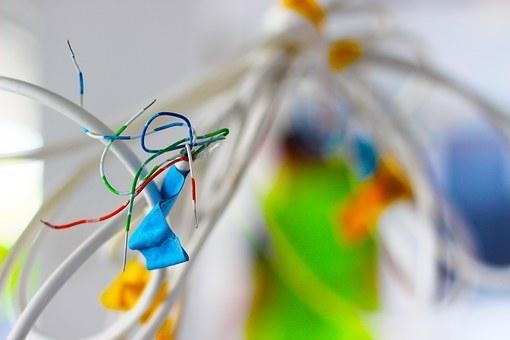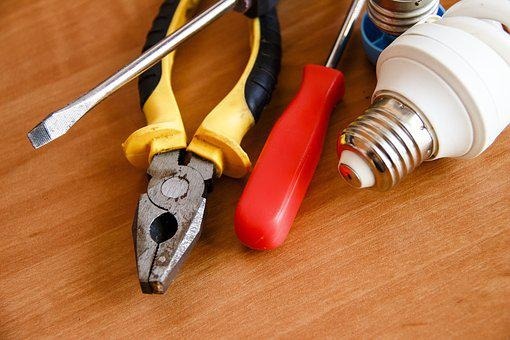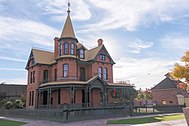Electrician in Cottonwood
Electrician Cottonwood
Find electricians who are licensed and have valid insurance. Some areas do not require electricians to hold licenses. Before hiring one, ensure you check the requirements for your state. A license is not required for an electrician. They should also have liability insurance. Even if they have insurance, electricians can be held liable for any injuries.

Electricians Cottonwood
It is a good way to find an electrician by using a job board. There are many job boards in this field. Employers can post job openings on Employmentcrossing to reach qualified candidates. SimplyHired can also be used by electrical companies to post jobs on other job boards. These services make it easy to hire an electrician. They can then find the best electrician to fit their needs.
Electrician in Cottonwood
National Electrical Contractors Association was established in 1901 and represents $130 million of the electrical contracting industry. The membership includes both small and big companies. The National Electrical Contractors Association includes a national headquarters and four regional offices. It also has ten districts and more than 128 chapters in each state. Its Board of Governors creates NECA policy, oversees its programs, and provides oversight for services. Local chapters elect members to the NECA board. The Association President is elected by local chapters. He or she is accompanied by vice-presidents from each district, and a Vice President at Large. The NECA staff then implements its policy and programs.


Electricians Cottonwood
Before the electrician arrives, the homeowner should have the electrical box labeled. This will help them identify problems faster. The electrician must also have access to electrical boxes, so it is important that you make sure the box is not locked or unsecured. When scheduling the inspection, make sure the electrician arrives at least two hours before your scheduled appointment time. You should also get the family out of the house before the electrician arrives. While the electrician is inside the home, he will also be checking out the main electrical panel to see if it's current and safe. The main panel should be grounded, and the breakers should be matched.
Cottonwood Electrician
Electrical safety inspections are essential for homeowners who own homes. A poor inspection can lead to costly repairs. A thorough inspection can reveal safety issues that must be repaired or replaced. A good inspection can also help prevent costly repairs and property damage. But what is an electrical safety inspector? Here are the main benefits. These are just a few of the many benefits it offers.

Electrician Cottonwood AZ
An electrician job description should include details about the company, job title and responsibilities. Highlight the potential benefits for the employee such as advancement opportunities and access to state-of-the art equipment. Other benefits such as medical insurance or 401K plans should be mentioned, along with opportunities for advancement. The job descriptions should highlight the electrician's ability to use company-provided safety equipment and programmable logic controllers.
Electricians Cottonwood Arizona
An electrician will inspect your home for safety hazards. A professional will inspect every outlet in your home, using a hand-held device that checks the voltage and ground wire connections. They will also check for any excessive wear or other issues that could lead to a possible fire. An inspection of safety can reveal whether your circuit breakers are in need of repair or GFCI outlets.
Electrician in Cottonwood
About Phoenix AZ
Phoenix, Arizona
|
Phoenix, Arizona
|
|
|---|---|
| City of Phoenix | |
|
Clockwise, from the top: Downtown Phoenix, St. Mary's Basilica, Rosson House, Mystery Castle, Camelback Mountain, Arizona State Capitol, Arizona Science Center, Chase Tower, and the Papago Park
|
|
|
|
|
| Nickname(s):
"Valley of the Sun", "The Valley"
|
|

Interactive map of Phoenix
|
|
Coordinates:  33°26′54″N 112°04′26″WCoordinates: 33°26′54″N 112°04′26″WCoordinates:  33°26′54″N 112°04′26″W 33°26′54″N 112°04′26″W |
|
| Country | United States |
| State | Arizona |
| County | Maricopa |
| Settled | 1867 |
| Incorporated | February 25, 1881 |
| Founded by | Jack Swilling |
| Named for | Phoenix, mythical creature |
| Government | |
| • Type | Council-Manager |
| • Body | Phoenix City Council |
| • Mayor | Kate Gallego (D) |
| Area | |
| • State Capital | 519.28 sq mi (1,344.94 km2) |
| • Land | 518.27 sq mi (1,342.30 km2) |
| • Water | 1.02 sq mi (2.63 km2) |
| Elevation | 1,086 ft (331 m) |
| Population
(2020)
|
|
| • State Capital | 1,608,139 |
| • Estimate
(2021)[3]
|
1,624,569 |
| • Rank | 5th in the United States 1st in Arizona |
| • Density | 3,102.92/sq mi (1,198.04/km2) |
| • Metro | 4,845,832 (11th) |
| Demonym | Phoenician |
| Time zone | UTC−07:00 (MST (no DST)) |
| ZIP Codes |
85001–85099
|
| Area codes | |
| FIPS code | 04-55000 |
| GNIS ID(s) | 44784, 2411414 |
| Major airport | Phoenix Sky Harbor International Airport |
| Secondary Airports | Deer Valley Airport Phoenix–Mesa Gateway Airport |
| Interstates | |
| U.S. Highways | |
| State Routes | |
| Public transportation | Valley Metro |
| Website | www |
Phoenix (/ˈfiːnɪks/ FEE-niks; Navajo: Hoozdo; Spanish: Fénix or Fínix,[citation needed] Walapai: Banyà:nyuwá[5]) is the capital and most populous city of the U.S. state of Arizona, with 1,608,139 residents as of 2020.[6] It is the fifth-most populous city in the United States,[7] and one of only two U.S. state capitals with a population of more than one million residents, along with Austin, Texas.[8][9][10]
Phoenix is the anchor of the Phoenix metropolitan area, also known as the Valley of the Sun, which in turn is part of the Salt River Valley. The metropolitan area is the 11th largest by population in the United States, with approximately 4.85 million people as of 2020.[9] Phoenix, the seat of Maricopa County, has the largest area of all cities in Arizona, with an area of 517.9 square miles (1,341 km2), and is also the 11th largest city by area in the United States.[11] It is the largest metropolitan area, both by population and size, of the Arizona Sun Corridor megaregion.
Phoenix was settled in 1867 as an agricultural community near the confluence of the Salt and Gila Rivers and was incorporated as a city in 1881. It became the capital of Arizona Territory in 1889.[12] It is in the northeastern reaches of the Sonoran Desert and has a hot desert climate.[13][14] Despite this, its canal system led to a thriving farming community with the original settlers' crops remaining important parts of the Phoenix economy for decades, such as alfalfa, cotton, citrus, and hay.[15][16] Cotton, cattle, citrus, climate, and copper were known locally as the "Five C's" anchoring Phoenix's economy. These remained the driving forces of the city until after World War II, when high-tech companies began to move into the valley and air conditioning made Phoenix's hot summers more bearable.[17]
The city averaged a four percent annual population growth rate over a 40-year period from the mid-1960s to the mid-2000s.[18] This growth rate slowed during the Great Recession of 2007–09, and has rebounded slowly.[19] Phoenix is the cultural center of the state of Arizona.[20] Phoenix is also majority minority, with 42.6% of its population identifying as Hispanic and 42.5% as "white" in the 2020 census.[21]










